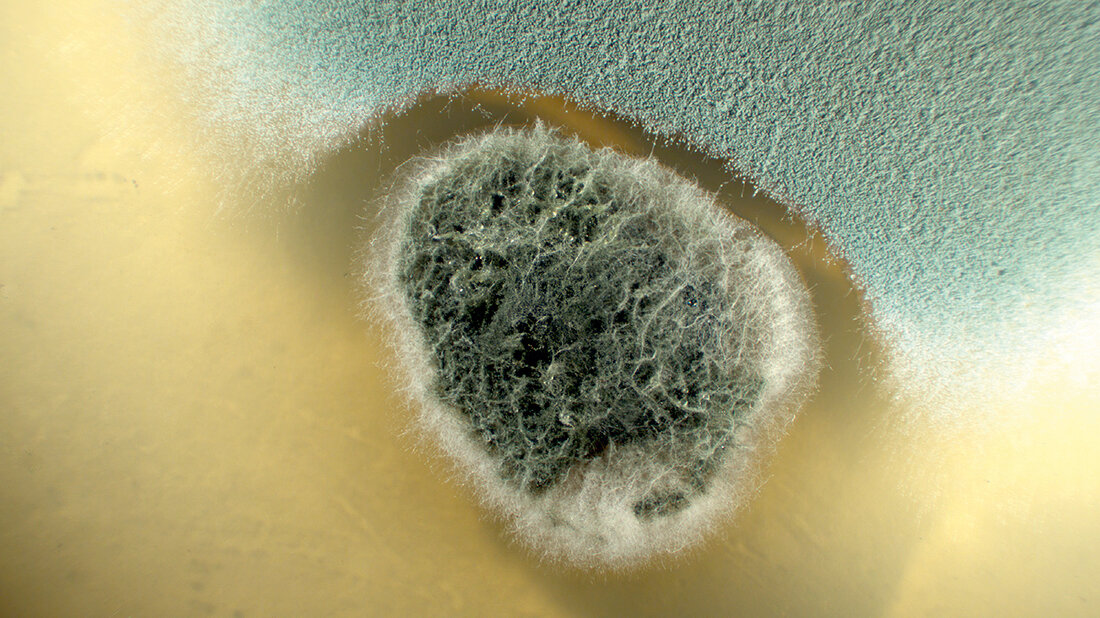Bacteriocine (inklusive Lantibiotika)
Zusammenfassung
Bacteriocine sind Naturprodukte mit antibakterieller Wirkung. Sie werden von sehr vielen Bakterien hergestellt. Besonders Laktobazillen bilden viele verschiedene Derivate. Es handelt sich dabei um Peptide oder kleine Proteine. Eine besondere Untergruppe sind die Lantibiotika, die eine spezielle Aminosäure, nämlich das Lantionin, enthalten. Sie binden an spezifische Rezeptoren auf den empfänglichen Bakterien und wirken auf verschiedene Weise meist bakterizid. Manche Bacteriocine wirken nur auf ganz nah verwandte Bakterien, während einige auch ein etwas breiteres Spektrum haben. Der Effekt ist, dass benachbarte Bakterien, die in Konkurrenz an einem Standort stehen, beseitigt werden. Sie haben also eine regulative Funktion in gemischten Bakterienpopulationen, etwa im Darm oder auf der Haut, und wirken wie Antibiotika. Ihre antibakterielle Wirkung kann in der Zukunft vielleicht gegen die Kolonisierung von pathogenen und multiresistenten Bakterien verwendet werden. Man kann sie auch in der Lebensmittelindustrie einsetzen, um den Verderb durch unliebsame Bakterien zu bremsen. Nisin und Pediocin haben derzeit dabei die größte Rolle. Auch Pilze bilden solche antimikrobiellen Stoffe, die Mycocine.
Schlüsselwörter: Bacteriocine, Lantibiotika, Multiresistenz, Mycocine
Abstract
Bacteriocins are natural compounds with antibacterial activity. Many bacteria, especially lactobacilli, are able to produce such items, consisting of peptides or small proteins. A particular subset are the lantibiotics, which dispose of a unique aminoacid, namely lantionin. They bind to specific receptors on the surface of susceptible bacteria and act bactericidal by various pathways. Whereas some bacteriocins attack only closely related bacteria, others dispose of a larger spectrum. In consequence, they are able to eliminate concurrent bacteria in the same ecologic niche. Hence, they exert a regulatory role in mixed bacterial populations, for example in the gut or on the skin, and they have an antibiotic effect. Hopefully, in the future one can profit from their antibacterial activity by preventing the colonisation of pathogenic and multiresistant bacteria. The food industry already uses some of these bacteriocins for the biopreservation of foodstuffs by eliminating undesired species. Nisin and pediocin are actually the most important ones. Fungi, too, produce antimicrobial substances, called mycocins.
Keywords: Bacteriocins, lantibiotics, multiresistant bacteria, mycocins
DOI: 10.53180/MTIMDIALOG.2024.0416
Entnommen aus MT im Dialog 6/2024
Dann nutzen Sie jetzt unser Probe-Abonnement mit 3 Ausgaben zum Kennenlernpreis von € 19,90.
Jetzt Abonnent werden

